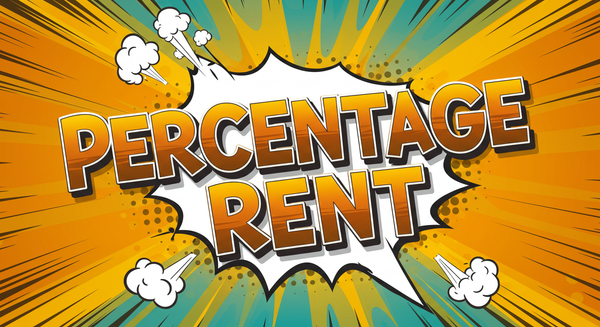Long-Term vs. Short-Term Rentals: A Practical Guide [+ Calculators]
Long-term rentals involve leasing a property for 30 days or more with stable tenant occupancy and predictable income, while short-term rentals are for stays under 30 days, offering flexible lodging for travelers and temporary residents.

Long-term rental and short-term rental are two core property management models that every landlord and property manager should understand. Long-term rentals typically refer to properties leased for 30 days or more, often with annual or multi-month leases, offering steady income and tenant stability. Short-term rentals, on the other hand, usually involve stays less than 30 days, such as vacation rentals or furnished apartments, and often require more intensive management and regulatory compliance.
Understanding the differences between these rental types matters because each carries distinct operational demands, financial opportunities, and legal obligations. Whether you manage residential leasing or a portfolio of short-term rental units, knowing these distinctions can protect your investment and improve profitability.
In this article, you’ll learn what defines long-term and short-term rentals, how they impact daily operations, key legal considerations, and best practices for success in both rental markets.
What Is Long-Term vs. Short-Term Rental?
Long-term rental is a leasing arrangement where a tenant occupies a property for an extended period, typically 30 days or longer, often formalized by a lease agreement. This model emphasizes tenant retention, predictable rental income, and less frequent turnover.
Short-term rental (STR), sometimes called vacation rental or furnished rental, refers to leasing residential units for brief stays—ranging from a single night up to 29 days. STRs often cater to travelers, digital nomads, or temporary residents seeking flexible housing options.
Some key terms related to these models include:
- Extended stay: A form of short-term rental designed for stays longer than typical vacation rentals but shorter than standard leases.
- Furnished apartment/home: Units equipped with furniture, appealing to short-term tenants and traveling professionals.
- Monthly rental: A term that can describe either model depending on lease length but often overlaps with extended stay and furnished rentals.
Both rental types have evolved with changes in technology, regulation, and tenant preferences. Short-term rentals grew rapidly due to platforms like Airbnb, while long-term rentals remain foundational to residential housing markets.
For more detailed legal definitions and classifications, see Build-to-Rent Communities Guide and Understanding STRs in Real Estate .
Impact & Applications
Operational Impact
Choosing between long-term and short-term rental models has profound effects on your property management operations, tenant relations, and financial outcomes.
Long-term rentals offer predictable cash flow and lower turnover costs but may require longer vacancy periods when tenants move out. Managing these rentals involves traditional lease agreements, tenant screening, rent collection, and periodic maintenance. Research shows that increasing average tenant stay by 28 days can reduce turnover costs significantly, adding thousands of dollars to net operating income (NOI).
Short-term rentals, by contrast, can generate approximately 30% more annual revenue than long-term rentals due to premium nightly rates. However, they demand more active management—frequent cleaning, guest communication, dynamic pricing, and compliance with transient occupancy taxes and local licensing. Property managers must juggle multiple guest turnovers within a single month, increasing operational complexity.
Missing crucial regulatory compliance or operational details in short-term rentals could cost you thousands in fines or lost revenue. For example, failure to obtain the proper short term rental permit or business license can result in legal penalties and forced closure, as detailed in local ordinance examples from San Francisco and Ocean City.
Tenant Stay Cost Savings Estimator
Estimate annual savings by increasing tenant stay length
Example: Transitioning a Long-Term Property to a Short-Term Rental
- Challenge: A landlord owning a residential property in San Francisco wanted to capitalize on the lucrative short-term rental market but faced complex city ordinances and tenant lease obligations.
- Solution: They applied for the necessary STR license, adjusted the property for guest-ready turnover, and implemented a technology-driven booking and cleaning schedule.
- Outcome: The property saw a 35% increase in gross revenue with a manageable increase in operational costs. Compliance with hotel occupancy tax and local regulations avoided legal issues.
- Takeaway: Proper planning, regulatory adherence, and operational upgrades are essential to profitably transition from long-term to short-term rentals.
Rental Income Comparison Calculator
Estimate monthly income: Short-Term vs Long-Term rentals
Legal & Compliance Essentials
Navigating legal requirements is critical for property owners managing both long-term and short-term rentals.
- Permits and Licenses: Short-term rentals often require specific permits, licenses, and registrations. Long-term rentals must comply with landlord-tenant laws and fair housing regulations.
- Transient Occupancy Tax (TOT): STRs are typically subject to TOT, collected and remitted to local authorities. Examples of these taxes and compliance frameworks can be found in Ocean City Maryland’s rental licensing guide .
- Occupancy Limits: Municipalities set maximum overnight occupancy and minimum stay durations to protect communities, as discussed in regulations in Honolulu and Washington State.
- Lease Agreements: Long-term rentals require clear lease contracts outlining rent, duration, and tenant responsibilities, including co-signer agreements to mitigate risk.
- Eviction and Dispute Resolution: Landlords must understand applicable eviction laws and alternatives like cash for keys agreements.
- Insurance: Different insurance policies cover risks associated with either rental type; STRs usually require liability and property damage coverage.
Always consult official local government resources to ensure compliance with up-to-date laws.
Best Practices for Managing Long-Term and Short-Term Rentals
1. Develop Clear Tenant Qualification Frameworks
Screen tenants or guests thoroughly using co-signer agreements and background checks to reduce risk and enhance retention.
2. Implement Technology for Operational Efficiency
Use property management software tailored for dynamic pricing, booking management, and maintenance scheduling, especially crucial for STRs.
3. Maintain Regulatory Compliance
Keep updated on local STR ordinances, permits, and tax obligations. Establish automated reminders for license renewals and tax filings to avoid costly penalties.
4. Focus on Tenant and Guest Experience
Tailor amenities based on tenant demographics: long-term residents prefer stability and community features; short-term guests value convenience and extras like parking and high-speed internet.
Key Questions Answered
What’s the difference between long-term rental and short-term rental?
Long-term rentals involve leases of 30 days or more, prioritizing tenant stability and steady income. Short-term rentals cater to stays less than 30 days, focusing on higher revenue but requiring active management and compliance with specific regulations.
How is rental income calculated for these models?
Rental income for long-term rentals is usually fixed monthly rent, while short-term rental income fluctuates based on nightly rates, occupancy, and seasonal demand. Management costs differ accordingly.
Can rental terms change during a lease?
For long-term leases, terms generally remain fixed unless both parties agree to changes. Short-term rentals offer flexibility, with nightly pricing and availability frequently adjusted to market conditions.
Conclusion & Resources
- Understanding the distinctions between long-term and short-term rentals is essential to optimize your property portfolio.
- Regulatory compliance and operational efficiency directly impact profitability and risk mitigation.
- Leveraging technology and tailoring tenant experiences can maximize returns in both markets.
Ready to optimize your property management strategy? Explore our LandlordDoc.com resource library for comprehensive guides on lease agreements, rental licensing, tenant screening, and more.
Legal Disclaimer: This article provides general information and should not be considered legal, financial, or accounting advice. Always consult qualified professionals for specific guidance.





